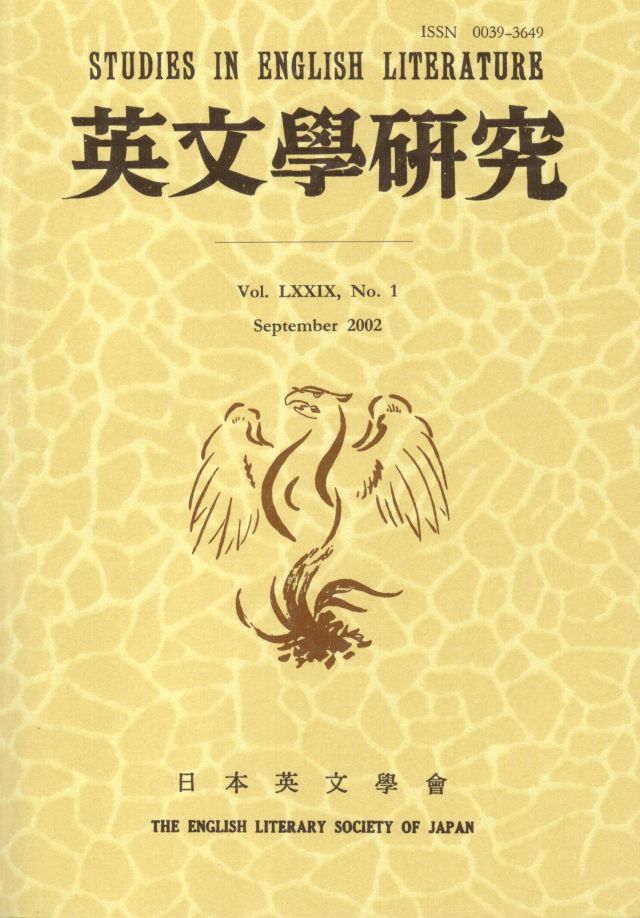Volume 36, Issue 2
Displaying 1-25 of 25 articles from this issue
- |<
- <
- 1
- >
- >|
-
Article type: Cover
1960 Volume 36 Issue 2 Pages Cover1-
Published: April 10, 1960
Released on J-STAGE: April 10, 2017
Download PDF (26K) -
Article type: Index
1960 Volume 36 Issue 2 Pages Toc1-
Published: April 10, 1960
Released on J-STAGE: April 10, 2017
Download PDF (32K) -
Article type: Article
1960 Volume 36 Issue 2 Pages 217-228
Published: April 10, 1960
Released on J-STAGE: April 10, 2017
Download PDF (731K) -
Article type: Article
1960 Volume 36 Issue 2 Pages 229-250
Published: April 10, 1960
Released on J-STAGE: April 10, 2017
Download PDF (1209K) -
Article type: Article
1960 Volume 36 Issue 2 Pages 251-272
Published: April 10, 1960
Released on J-STAGE: April 10, 2017
Download PDF (1349K) -
Article type: Article
1960 Volume 36 Issue 2 Pages 273-285
Published: April 10, 1960
Released on J-STAGE: April 10, 2017
Download PDF (840K) -
Article type: Article
1960 Volume 36 Issue 2 Pages 287-302
Published: April 10, 1960
Released on J-STAGE: April 10, 2017
Download PDF (1007K) -
Article type: Article
1960 Volume 36 Issue 2 Pages 303-318
Published: April 10, 1960
Released on J-STAGE: April 10, 2017
Download PDF (897K) -
Article type: Article
1960 Volume 36 Issue 2 Pages 319-320
Published: April 10, 1960
Released on J-STAGE: April 10, 2017
Download PDF (219K) -
Article type: Article
1960 Volume 36 Issue 2 Pages 320-322
Published: April 10, 1960
Released on J-STAGE: April 10, 2017
Download PDF (308K) -
Article type: Article
1960 Volume 36 Issue 2 Pages 322-323
Published: April 10, 1960
Released on J-STAGE: April 10, 2017
Download PDF (209K) -
Article type: Article
1960 Volume 36 Issue 2 Pages 323-325
Published: April 10, 1960
Released on J-STAGE: April 10, 2017
Download PDF (327K) -
Article type: Article
1960 Volume 36 Issue 2 Pages 325-327
Published: April 10, 1960
Released on J-STAGE: April 10, 2017
Download PDF (306K) -
Article type: Article
1960 Volume 36 Issue 2 Pages 327-331
Published: April 10, 1960
Released on J-STAGE: April 10, 2017
Download PDF (377K) -
Article type: Article
1960 Volume 36 Issue 2 Pages 331-334
Published: April 10, 1960
Released on J-STAGE: April 10, 2017
Download PDF (351K) -
Article type: Bibliography
1960 Volume 36 Issue 2 Pages 335-338
Published: April 10, 1960
Released on J-STAGE: April 10, 2017
Download PDF (227K) -
Article type: Bibliography
1960 Volume 36 Issue 2 Pages 338-339
Published: April 10, 1960
Released on J-STAGE: April 10, 2017
Download PDF (115K) -
Article type: Appendix
1960 Volume 36 Issue 2 Pages 340-343
Published: April 10, 1960
Released on J-STAGE: April 10, 2017
Download PDF (229K) -
Article type: Appendix
1960 Volume 36 Issue 2 Pages 343-344
Published: April 10, 1960
Released on J-STAGE: April 10, 2017
Download PDF (98K) -
Article type: Appendix
1960 Volume 36 Issue 2 Pages 345-
Published: April 10, 1960
Released on J-STAGE: April 10, 2017
Download PDF (36K) -
Article type: Appendix
1960 Volume 36 Issue 2 Pages 345-
Published: April 10, 1960
Released on J-STAGE: April 10, 2017
Download PDF (36K) -
Article type: Appendix
1960 Volume 36 Issue 2 Pages 346-347
Published: April 10, 1960
Released on J-STAGE: April 10, 2017
Download PDF (52K) -
Article type: Appendix
1960 Volume 36 Issue 2 Pages App1-
Published: April 10, 1960
Released on J-STAGE: April 10, 2017
Download PDF (48K) -
Article type: Appendix
1960 Volume 36 Issue 2 Pages App2-
Published: April 10, 1960
Released on J-STAGE: April 10, 2017
Download PDF (48K) -
Article type: Appendix
1960 Volume 36 Issue 2 Pages App3-
Published: April 10, 1960
Released on J-STAGE: April 10, 2017
Download PDF (48K)
- |<
- <
- 1
- >
- >|
